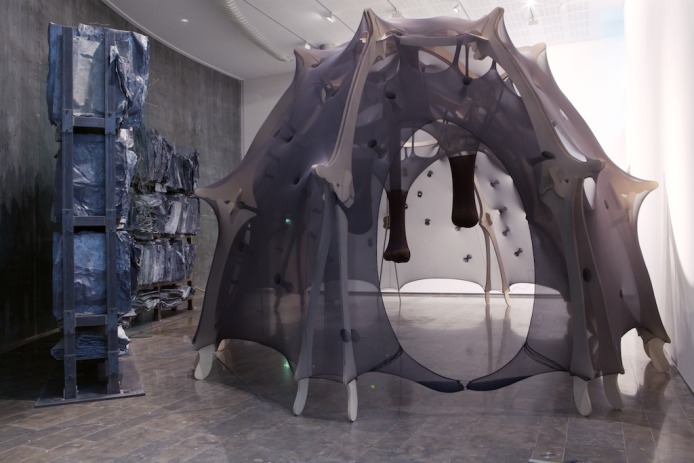 |
| The Unicorn in Captivity, around 1500, The Cloisters, New York |
 |
| The Trie Cloister. Capitals: Late 15th century. Fountain: Different elements from around 1500. |
 |
| A page from the Limbourg Brother's Belles Heures, about 1410 |
 |
| The Langon Chapel. Original parts of the stonework: 12th century. (Photo: James Muspratt) |
The first semester I spent in New York, I was struggling to deal with my new situation as a mediocre (at best!) dance student among so many talented dancers. But I worked hard in class, and when I was not too exhausted from that, I would explore the city by foot. I also watched dance shows and film, moved around by subway, ate my lunches in Union Square, had very little money, and lived with many different roommates in crappy apartments. - Without ever reflecting on how this move from my well organized life at my parents' house, in the outskirts of Europe, actually affected me.
I just happened to notice something very peculiar when I visited The Cloisters one crisp and beautiful autumn day.
It was not a religious experience, and I did not yet have any particular interest in the art I saw there. It must just have been that big transition from busy downtown everyday life to those quiet and beautiful surroundings on that hill way up north on Manhattan, overlooking the Hudson River.
The calm and inspired state I reached that day when I looked at the beautiful unicorn tapestries, walked through the sensuous gardens and experienced the magnificent light and sacred ambience in the different chapels, is something that I ever since then have thought of as "The Cloister Mood".
* * *
This blog is supposed to be about art and sometimes about poetry (and I do not want the posts to be too long for people to bother reading them), but today I feel a strong need to write a little something about sex and literature... (Feel free to stop reading right here, because the sex-part will not be particularly sensational, I'm afraid.)
Thinking about the sacred feeling I got that long time ago at The Cloisters, I would like to tell you about reading one of the Norwegian tabloids when I was in Oslo about a week ago.
I had just finished the memoir "Eat, Pray, Love", in which I found the "Pray" part most interesting (where the protagonist struggles with her meditation). And the night before I had heard David Lynch speak about meditation and creative work. He was stopping in Oslo on a book tour, at the same time as Jonathan Franzen was there to present his last novel, "Freedom". (Two very big names in such a provincial capital at the same time!)
So in that paper (which is a curious mix of gaudy tabloid with a well informed culture section), there was a piece on David Lynch ("mild and kind" - almost like a minister?), and there was one on Jonathan Franzen, who talked about the novel as salvation (not the exact term he used, though) from our busy lives that are so dense with digital information. The novel, he said, makes us sit down for long, quiet periods, and it gives us a precious chance to reflect.
But the front page of that paper - in which these two great artists put forth eternal (almost religious) values (love, beauty, centeredness, reflection) - was covered by a minister from the Church of Norway, the "celebrity minister" Einar Gelius. That day he made top news for having published a book about sex in the bible, in which he apparently hails pornography and elaborates on his private sexual preferences.
I'm all for sex, don't misunderstand. And obviously this rebel minister does not represent the Church of Norway in this case. It is just a pity that the Church of Norway does not manage to get more publicity about what it has to offer on the matters of which David Lynch and Jonathan Franzen spoke in the same paper: Love, beauty, meditation and reflection.
(... And I am aware that putting the sex-word in the heading of this post may be deemed as speculative as putting the "celebrity minister" on the front page of that paper...)

















